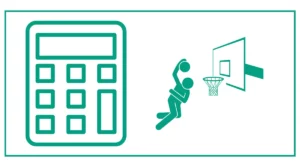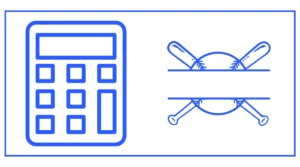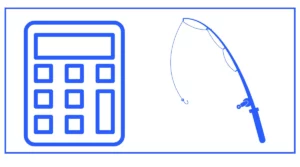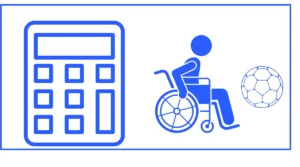Catch Rate Calculator
The catch rate calculator helps you find your catch rate percentage.
Enter the number of total catches and the number of attempts to find your catch rate.
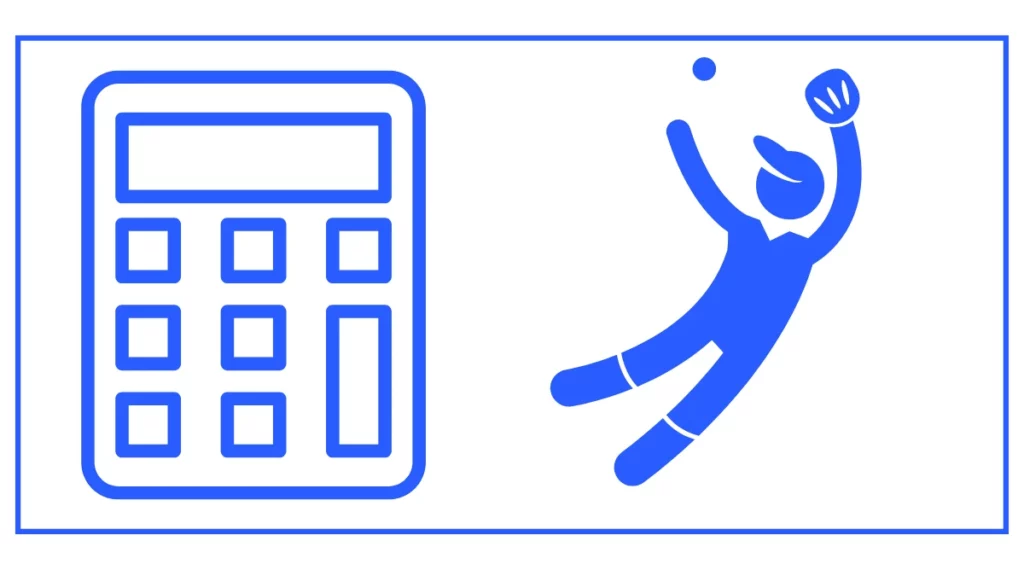
You might want to calculate your batting average or handicap bowling.
What is a Catch Rate?
A catch rate, in the context of sports like cricket, is a statistical measure that represents the percentage of successful catches made by a player or team out of the total catching opportunities presented. This metric is particularly important in cricket, where dropped catches can be costly and impact the game’s result.
The Importance of Catch Rates in Cricket
Catching is a fundamental aspect of cricket fielding. Whether it’s a slip fielder taking a sharp edge or a boundary rider holding onto a skied shot, catches can turn the tide of a match. Here’s why catch rates are significant:
- Player Evaluation: Catch rates help assess a player’s fielding ability and reliability.
- Team Strategy: Understanding catch rates can influence field placements and bowling plans.
- Performance Improvement: Tracking catch rates over time can highlight areas for individual and team improvement.
- Match Analysis: Catch rates contribute to overall game statistics and post-match analysis.
Factors Affecting Catch Rates
Several factors can influence a player’s or team’s catch rate:
- Fielding Position: Some positions, like slip or gully, may have more difficult catching opportunities.
- Ball Velocity: Faster deliveries or hard-hit shots can be more challenging to catch.
- Weather Conditions: Wind, sun, or rain can affect catching difficulty.
- Player Skill and Experience: More experienced players often have better catch rates.
- Fatigue: Long periods in the field can impact concentration and catching ability.
How to Calculate Catch Rates
The basic formula for calculating catch rate is straightforward:
CopyCatch Rate = (Number of Successful Catches / Total Catching Opportunities) * 100
For example, if a player has taken 8 catches out of 10 opportunities, their catch rate would be:
Copy(8 / 10) * 100 = 80%
This calculation provides a percentage that represents the player’s catching efficiency.
Using a Catch Rate Calculator
To simplify the process of determining catch rates, you can use a catch rate calculator. This tool quickly computes the catch rate based on the number of successful catches and total opportunities.
How to Use the Catch Rate Calculator
- Enter the total number of successful catches.
- Enter the total number of catching opportunities.
- Click the “Calculate” button.
The calculator will then provide you with the catch rate percentage.
Catch Rate Calculator Tool
To help you determine catch rates quickly and easily, we’ve provided a simple catch rate calculator below. This tool calculates the catch rate based on the number of successful catches versus the total number of opportunities.
[Insert the provided calculator HTML/CSS/JavaScript code here]
Interpreting Catch Rates
While catch rates provide valuable insights, it’s important to interpret them in context:
What’s a Good Catch Rate?
In cricket, catch rates can vary depending on the level of play and fielding position. However, as a general guideline:
- 90% and above: Excellent
- 80-89%: Very good
- 70-79%: Good
- 60-69%: Average
- Below 60%: Needs improvement
Remember, these are general guidelines and can vary based on the difficulty of chances and other factors.
Catch Rates Across Different Fielding Positions
Catch rates can vary significantly across different fielding positions in cricket:
Slip Fielders
Slip fielders often have lower catch rates due to the difficulty of chances they receive. These are typically fast, edge catches that require quick reflexes.
Outfielders
Outfielders might have higher catch rates as they often have more time to judge the ball’s trajectory. However, they also face challenges like covering large distances and dealing with high, swirling catches.
Wicketkeepers
Wicketkeepers generally have high catch rates as catching is their primary role. They receive a mix of straightforward and difficult chances.
Improving Catch Rates
For players looking to improve their catch rates, consider these tips:
- Practice Regularly: Regular catching practice in various conditions can improve skills and confidence.
- Focus on Technique: Proper hand positioning and body alignment can make catches easier.
- Improve Fitness: Good overall fitness, especially in areas like hand-eye coordination and agility, can enhance catching ability.
- Mental Preparation: Staying focused and anticipating catches can improve reaction times.
- Analyze Dropped Catches: Understanding why catches were dropped can help address weaknesses.
Catch Rates in Other Sports
While we’ve focused primarily on cricket, catch rates are relevant in other sports as well:
Baseball
In baseball, catch rates (often called fielding percentage) are crucial for evaluating defensive players. The calculation is similar to cricket, but also includes errors in the formula.
American Football
For receivers in American football, catch rates represent the percentage of passes caught out of the total passes thrown to them. This stat is vital for evaluating receiver performance.
Australian Rules Football
In AFL, marking (catching the ball) is a key skill, and players’ marking efficiency is closely monitored.
Advanced Considerations in Catch Rate Analysis
When delving deeper into catch rate analysis, consider these advanced factors:
Difficulty of Chances
Not all catches are equally difficult. Some analysts categorize chances as “regulation,” “difficult,” or “half-chances” to provide more nuanced insights.
Impact on the Game
Some catches, like those dismissing top-order batsmen or taken at crucial moments, can have a more significant impact on the game’s outcome.
Consistency Over Time
Analyzing a player’s catch rate over an extended period can provide insights into their consistency and improvement trends.
How do teams use catch rate data?
Teams use catch rate data for player evaluation, training focus, and strategic decision-making in field placements.
Can catch rates be misleading?
Yes, catch rates should be considered alongside other factors like the difficulty of chances and the number of opportunities. A player with a 100% catch rate from only two easy chances isn’t necessarily better than one with an 80% rate from 20 difficult chances.

